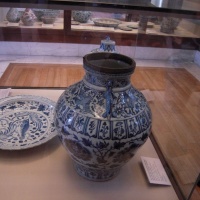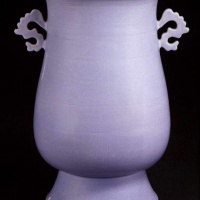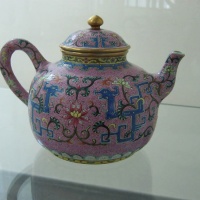- Home Page
- Fact Tours
Our sample tour itineraries of China and China travel packages are sorted by theme and available at competitive prices, you can browse what tours are right for you for your trip to China.
Popular China Tour Packages

Custom Tour Packages to China and Ask Our Experts for Free Enquiry !
- Coach Tours
- Destinations
Beijing, the capital of China. Its art treasures and universities have long made it a center of culture and art in China.
Beijing Top Attractions
Beijing City Tours
Best China Tours with Beijing
Shanghai, the cultural and economic center of East Asia. It renowned for its historical landmarks, the extensive and growing skyline.
Shanghai Top Attractions
Shanghai City Tours
Best China Tours with Shanghai
Xi'an, having held the position under several of the most important dynasties. It is the top destination to explore the facts of Chinese history.
Xi'an Top Attractions
Xi'an City Tours
Best China Tours with Xi'an
Huangshan boasts its culture, beautiful rivers, villages and mountains. It's home to 2 UNESCO World Heritage Sites and the Mecca of photographers.
Huangshan Top Attractions
Huangshan City Tours
Best China Tours with Huangshan
Sichuan is the cradle of the Shu culture, panda, mahjong, teahouse and spicy food. The province ranks first in China by number of UNESCO World Heritage Sites. It is called "the Heaven of Abundance".
Sichuan Top Attractions
Sichuan Tour Packages
Best China Tours with Sichuan
Yunnan, literally means the south of colorful clouds, due to its beautiful landscapes, mild climate and diverse ethnic cultures and traditions, is one of China's major tourist destinations.
Yunnan Top Attractions
Tibet, the nearest land to the sky, is known for its breathtaking landscape, splendid culture, art, buildings, and mysterious religions.
Tibet Top Attractions
Tibet Tour Packages
Best China Tours with Tibet
Explore the lost civilizations by riding a camel! Travel across the Gobi and the desert, and over the high mountains. Our Silk Road tours including different sections of the Silk Road in China.
Silk Road Top Attractions
Silk Road Tour Packages
Best China Tours with Silk Road
Guilin, an internationally-known historical and cultural city, has long been renowned for its unique karst scenery. Its vicinities are the paradise of hiking, caving, rafting, biking and countryside exploring.
Guilin Top Attractions
- China Facts
- China Hotels
- Travel Photos
Arts and Crafts
- Chinese Silk
- Chinese Sculpture & Carving
- Chinese Quyi
- Chinese Shadow Puppet Show
- Chinese Pearls
- Chinese Paper Cut
- Chinese Painting
- Chinese Music
- Chinese Lacquer Ware
- Chinese Wushu or Kung Fu
- Chinese Jade
- Chinese Games
- Chinese Dances
- Chinese Culture
- Chinese Ceramics
- Chinese Calligraphy
- Ancinent Chinese Bronze Vessels
- Chinese Acrobatics
Chinese Ceramics
A brief introduction to Chinaware, Pottery, Porcelain, Porcelain Enamel
Ceramic is a word that generally refers to art, practice and technique preparing ceramic objects or the objects made by this method. Ceramic product is made of clay and shaped by baking until hard. It refers to earthenware, chinaware, pottery, porcelain and porcelain enamel. Its produce ranges from brick, tile, pot, clay pipe and all fire-proofs made of bat, vitreous china and various species of porcelain, as well as china-ware.
 Chinaware, a general designation of pottery and porcelain, just is referred to from the country name - China. Pottery was of rough appearance and texture by neolite but it had been developing towards porcelain..
Chinaware, a general designation of pottery and porcelain, just is referred to from the country name - China. Pottery was of rough appearance and texture by neolite but it had been developing towards porcelain..
Earthenware production has a long history in China, beginning with the primitive pottery of prehistoric times. Chinese primitive tribes began making artifacts with clay at the end of Paleolith, as early as over 8000 years ago. The origin of porcelain techniques is unknown, but it is believed to be started with the crafts of hand-molded earthenware vessels.
Ceramic was started to be well developed in early Neolithic. The primitive 'Yanshao' culture (so-named because the first excavation of an agricultural village was made in the region of the village of Yangshao, near the confluence of the Yellow, Fen and Wei Rivers) is noted for its distinctive painted pottery, with flowers, fish, animals, sometimes human faces, and geometric designs painted on by brush. Around 3500 BC the 'Lungshanoid' culture (so-named because the first evidence of this ancient culture was excavated near the village of Lungshan in Shandong Province) was making eggshell-thin black pottery, as well as a type of white pottery.
Pottery-making was well advanced by the Shang period; the most important development occurred around the middle of the dynasty with the manufacture of a high-fired greenish glaze applied to stoneware artifacts. Until 25-220 AC (during the East Han Dynasty in China), the hard, white, translucent pottery with soft glaze, known as porcelain, came out firstly in China. It was during the Han Dynasty that the custom of glazing pottery became fairly common. A yellowish-grey glaze applied to a reddish surface, for example, resulted after firing in a pale shade of green. The production of terracotta pottery-made of a mixture of sand and clay fired to produce a reddish-brown color and left unglazed-continued to survive however. From the time being, porcelain produces spread abroad eastwardly to Japan and west forwards to Europe. From then on, China had started to dominate the chinaware manufacturing in the world.
 During the Southern and Northern Dynasty periods, a type of proto-porcelain was developed. This is a type of pottery halfway between Han glazed pottery and true porcelain. The proto-porcelain was made by mixing clay with quartz and the mineral feldspar to make a hard smooth-surfaced vessel. Feldspar was mixed with traces of iron and produced an olive-green glaze. Few examples survive but ghee technique was perfected under the Tang. By the 8th century, Tang proto-porcelain and other types of pottery had found an international market, and were exported as far afield as Japan and the east coast of Africa. Chinese porcelain did not find its way into Europe until the Ming period and it was not until the 17th century that porcelain was manufactured in Europe. The Tang period also saw the introduction of tri-color glazed vessels.
During the Southern and Northern Dynasty periods, a type of proto-porcelain was developed. This is a type of pottery halfway between Han glazed pottery and true porcelain. The proto-porcelain was made by mixing clay with quartz and the mineral feldspar to make a hard smooth-surfaced vessel. Feldspar was mixed with traces of iron and produced an olive-green glaze. Few examples survive but ghee technique was perfected under the Tang. By the 8th century, Tang proto-porcelain and other types of pottery had found an international market, and were exported as far afield as Japan and the east coast of Africa. Chinese porcelain did not find its way into Europe until the Ming period and it was not until the 17th century that porcelain was manufactured in Europe. The Tang period also saw the introduction of tri-color glazed vessels.
Chinese pottery reached its artistic peak under the Song. During this time true porcelain was developed, made of fine gaolin clay, white, thin, transparent or translucent. The art of the Song is generally regarded as the finest China has ever produced. The production of porcelain continued under the Yuan but gradually lost the delicacy and near-perfection of the Song period. However, it was probably during this time that the 'blue and white' porcelain-as it became known under the Ming-made its firs appearance.
The blue and white type (blue decoration on a white background) was obtained from the gaolin clay quarried near Jingdezhen coupled with a type of cobalt imported from Persia. Also produced during this period were the three-color and five-color porcelain (the former usually green, yellow and violet, the latter with light blue and red as well) with floral decorations on a white background. Another notable invention was mono-colored porcelain, in ferrous red, black or dark blue.
 A range of new mono-colored vessels was developed under the Qing. The tradition of colored porcelain also continued with the addition of new colors and glazes and more complex decorations. This was the age of true painted porcelain, decorated with delicate landscapes, birds and flowers; elaborate and ornate designs and brilliant coloring became the fashion, along with the imitation, in porcelain, of all sorts of other materials such as gold and silver, mother of pearl, jade, bronze alloy, wood and bamboo.
A range of new mono-colored vessels was developed under the Qing. The tradition of colored porcelain also continued with the addition of new colors and glazes and more complex decorations. This was the age of true painted porcelain, decorated with delicate landscapes, birds and flowers; elaborate and ornate designs and brilliant coloring became the fashion, along with the imitation, in porcelain, of all sorts of other materials such as gold and silver, mother of pearl, jade, bronze alloy, wood and bamboo.
At last, what must be mentioned about chinaware is Beijing Cloisonné - one kind of porcelain enamel that got its name in Ming dynasty in China for success of crafts.
China has been taken pride in its ceramics and won a worldwide reputation for Ceramic produce for thousands of years. A great variety of ceramic products come from China spread all over the world. Nowadays, Chinese chinaware inevitably has a worldwide reputation, and is especially famous for its Purple Sand Tao (tea pottery) in Yuxing, (Jiangsu province) and Blue and white porcelain in Jingdezhen (Jiangxi province). Also, green porcelain in Longquan(Zhejiang province), white porcelain in Dehua (Fujian province) and Haicheng porcelain in Liaoning province gain their fame in porcelain industry.
In the process of ceramic development, different styles of different periods blossomed over the centuries. Let us take an overview of the ceramics in different times in China.
Questions & Comments
Home | About Us | Partnerships | Terms & Conditions | Privacy & Security | Payment Guide | Resource Links| Sitemap
Email: contact@chinafacttours.com, Tel: +86-773-3810160, Fax: (+86) 773-3810333
Copyright © 2008-2020 China Fact Tours. All rights reserved
![]()









